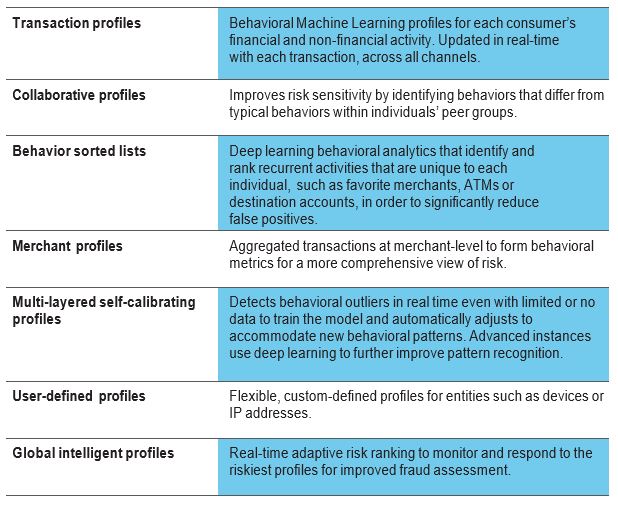Fraud Detection: Applying Behavioral Analytics
A robust enterprise fraud solution combines a range of behavioral analytics models and profiles, which can understand evolving patterns in real time.

This is the second in my series on five keys to using AI and machine learning in fraud detection. Key 2 is behavioral analytics.
Behavioral analytics use machine learning to understand and anticipate behaviors at a granular level across each aspect of a transaction. The information is tracked in profiles that represent the behaviors of each individual, merchant, account and device. These profiles are updated with each transaction, in real time, in order to compute analytic characteristics that provide informed predictions of future behavior.
Profiles contain details of monetary and non-monetary transactions. Non-monetary may include a change of address, a request for a duplicate card or a recent password reset. Monetary transaction details support the development of patterns that may represent an individual’s typical spend velocity, the hours and days when someone tends to transact, and the time period between geographically disperse payment locations, to name a few examples. Profiles are very powerful as they supply an up- to-date view of activity used to avoid transaction abandonment caused by frustrating false positives.
A robust enterprise fraud solution combines a range of analytic models and profiles, which contain the details necessary to understand evolving transaction patterns in real time. A good example of this occurs in our FICO Falcon Fraud Manager, with its Cognitive Fraud Analytics.
Given the sophistication and speed of organized fraud rings, behavioral profiles must be updated with each transaction. This is a key component of helping financial institutions anticipate individual behaviors and execute fraud detection strategies, at scale, which distinguish both legitimate and illicit behavior changes. A sample of specific profile categories that are critical for effective fraud detection includes:

Key 3 is distinguishing specialized from generic behavior analytics. Watch for that post, and follow me on Twitter @FraudBird.
For more information:
- Review Key 1: Integrating Supervised and Unsupervised AI Models in a Cohesive Strategy
- Review Key 3: Distinguishing Specialized from Generic Behavior Analytics
- Review Key 4: Leveraging Large Datasets to Develop Models
- Review Key 5: Adaptive Analytics and Self-Learning AI
- Read our white paper Fighting Scams with AI Decisioning
Popular Posts

Business and IT Alignment is Critical to Your AI Success
These are the five pillars that can unite business and IT goals and convert artificial intelligence into measurable value — fast
Read more
FICO® Score 10T Decisively Beats VantageScore 4.0 on Predictability
An analysis by FICO data scientists has found that FICO Score 10T significantly outperforms VantageScore 4.0 in mortgage origination predictive power.
Read more
Average U.S. FICO Score at 717 as More Consumers Face Financial Headwinds
Outlier or Start of a New Credit Score Trend?
Read moreTake the next step
Connect with FICO for answers to all your product and solution questions. Interested in becoming a business partner? Contact us to learn more. We look forward to hearing from you.
